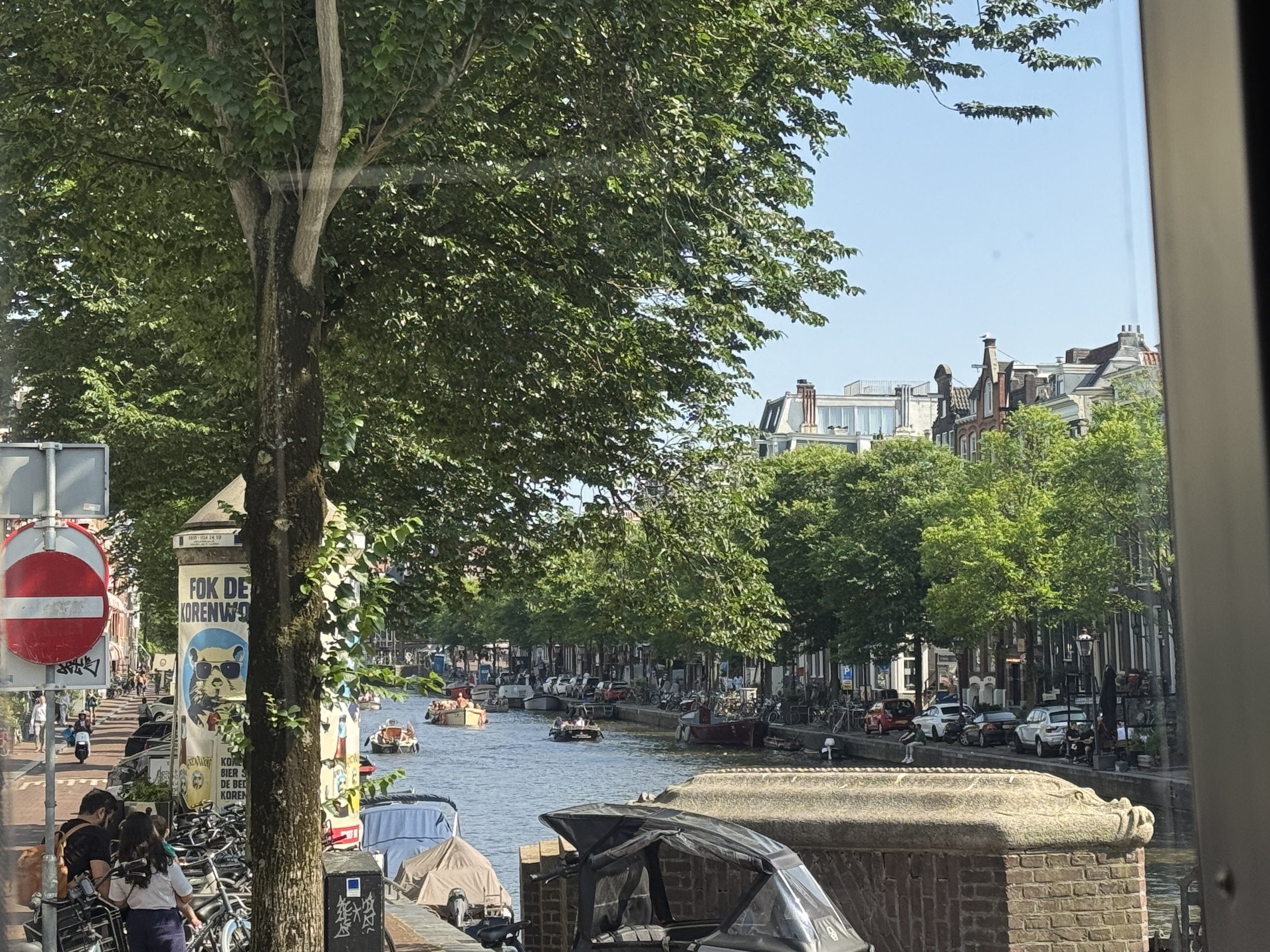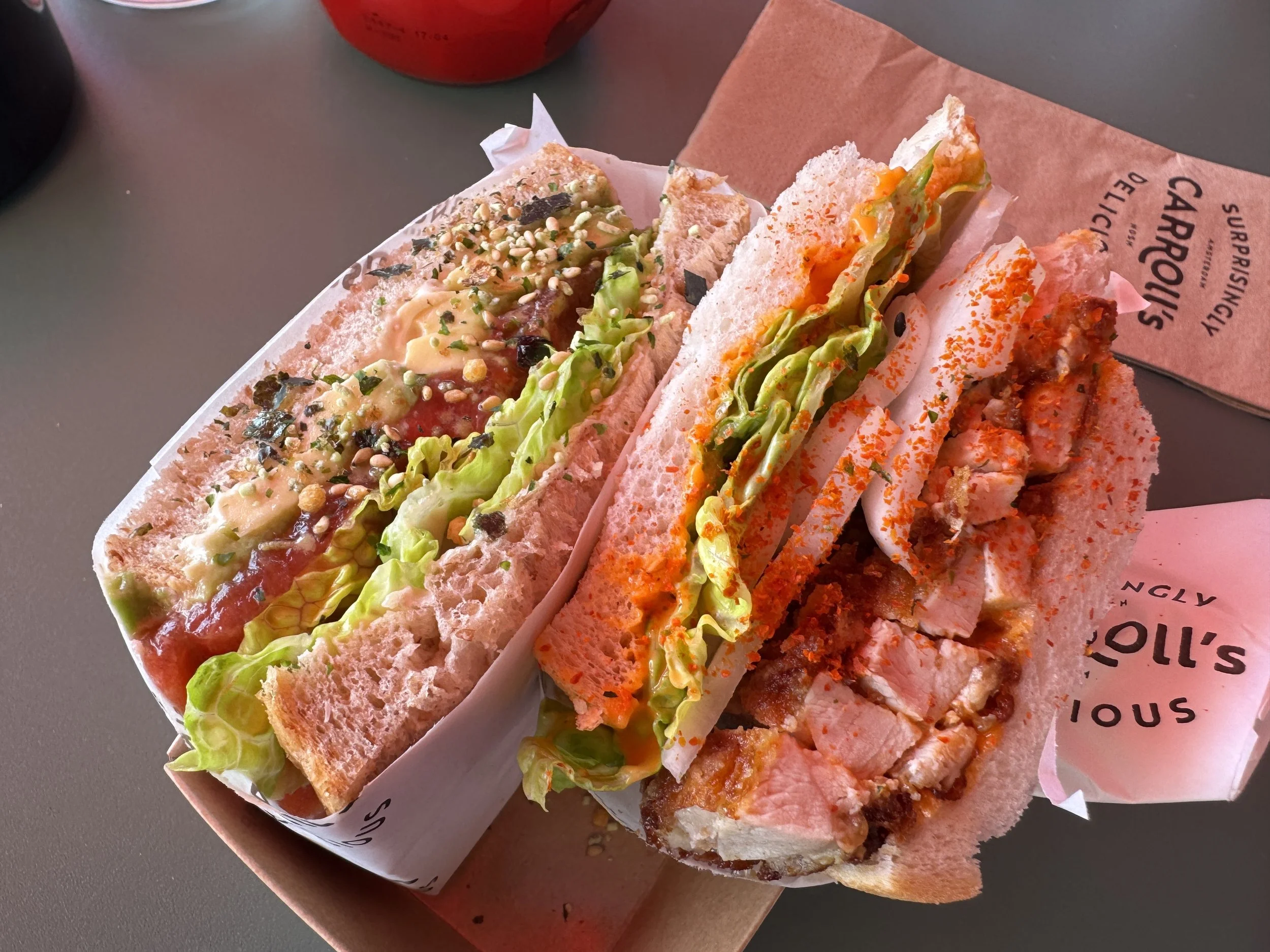A Boater’s Haven
The Netherlands is the 33rd most densely populated country - over 18 million people all living within a total area of 16,160 sq. mi (41,850 sq. km) of which the land area is only 12,900 sq. mi. (33,500 sq. km). According to the Global Peace Index, it is also one of the safest countries in the world - violence and street crime levels are relatively low. Known for its excellent higher education, Dutch institutions offer the largest number of English-taught programs in continental Europe and about 95% of the Dutch people speak English.
Since WWII, the Netherlands has seen fast and continuous economic growth. Amsterdam emerged as a major trading center in the 17th century. By initiating international cooperation through alliances with Belgium and Luxembourg, and later the European Union and NATO, it brought together countries and cultures encouraging the open exchange of ideas, innovations, free thought, and the acceptance of cultural differences. An era of peace and prosperity followed. Today, the Netherlands is one of the most developed and wealthiest countries in the world. A society that encourages independent thinking, supports multiculturalism, and practices tolerance.
We were fortunate enough to be shown around the city by local residents Vladimir and Helena, fellow Nordhavn 41 owners and residents of Amsterdam, who had invited us to join them for lunch. We met outside the MOCA (Museum of Contemporary Art) and proceeded on a walking tour. We walked past some of Amsterdam’s world-famous, iconic museums like the Rijksmuseum, Van Gogh Museum, and Stedelijk Museum. Some of art history's most influential painters: Rembrandt, Vermeer, Van Gogh, Mondrian were from the Netherlands. The city is also full of other hidden gems: a museum dedicated entirely to cats, one which houses a collection of self-playing pianos, and lots of exhibitions tucked inside small canal houses. There are museums of street art and surrealism and everything else you might imagine.
Our tour took us through Vondelpark, named after the Dutch playwright and poet, Joost van den Vondel, which is the largest park in Amsterdam and possibly the most famous park in the Netherlands. It covers 47 hectares (120 acres) and includes, ponds and water features, bike paths, walking tracks, sports fields, sculptures and open-air theaters. It was a perfect day to wander the park and get acquainted with our new friends. We ended our visit with a fabulous seafood lunch at one of their favorite restaurants.
We wandered further afield, admiring the architecture, dodging bicycles and crossing dozens of canals. In fact, Amsterdam has more canals than Venice - over 165 in total, and thousands of people actually live on the canals in the 2500 house boats in Amsterdam proper.
You are probably already aware that the city is known as the "bicycle capital of the world" - there are an estimated 880,000 bicycles in the city. But did you know there are 513 kilometers (318 miles) of dedicated cycling routes within the city limits? And that bicycles have the right of way on all roads?
It is hard not to notice a large number of the bikes have a bright blue front tire. After some investigation we learned that the Netherlands-based company called Swapfiets, now operating in six countries in Europe, is behind these blue wheeled bikes. Fiets is the Dutch word for bicycle, but it’s the swap that’s the main pitch to potential riders. Rather than grab an available rental bike for a day trip or a transit across town, the idea is a monthly fee (roughly $20) and included are free repairs for flat tires and other mechanical issues, or a fully tuned replacement bike swapped within 48 hours. All their bikes come with a frame-mounted lock, battery-free lights, a front rack and their signature bright blue front wheel. What a brilliant business model!
Before returning to the boat we also visited an artisanal cheese-making factory. The Dutch have a long history of cheese making. It is too wet for growing most crops but it is perfectly suited as pasture for cows, the Netherlands was made for cheese. Gouda and Edam, of course, but also Frisian Nagelkaas with cloves (translates to nail cheese) and Leidse kaas flecked with cumin. We sampled far too many of them, ultimately settling on a wheel of aged gouda.





We eventually left Amsterdam and cruised back up through the Markermeer and on into the IJsselmeer, a shallow freshwater lake measuring 1,100 sq. km (425 sq. miles), the biggest lake in all of Western Europe. We anchored for the night just outside of the lock on the east side of the lake and spent a wonderfully quiet evening afloat. The next morning we transited the lock and passed through a swing bridge and entered the Wadden Sea. (see map)










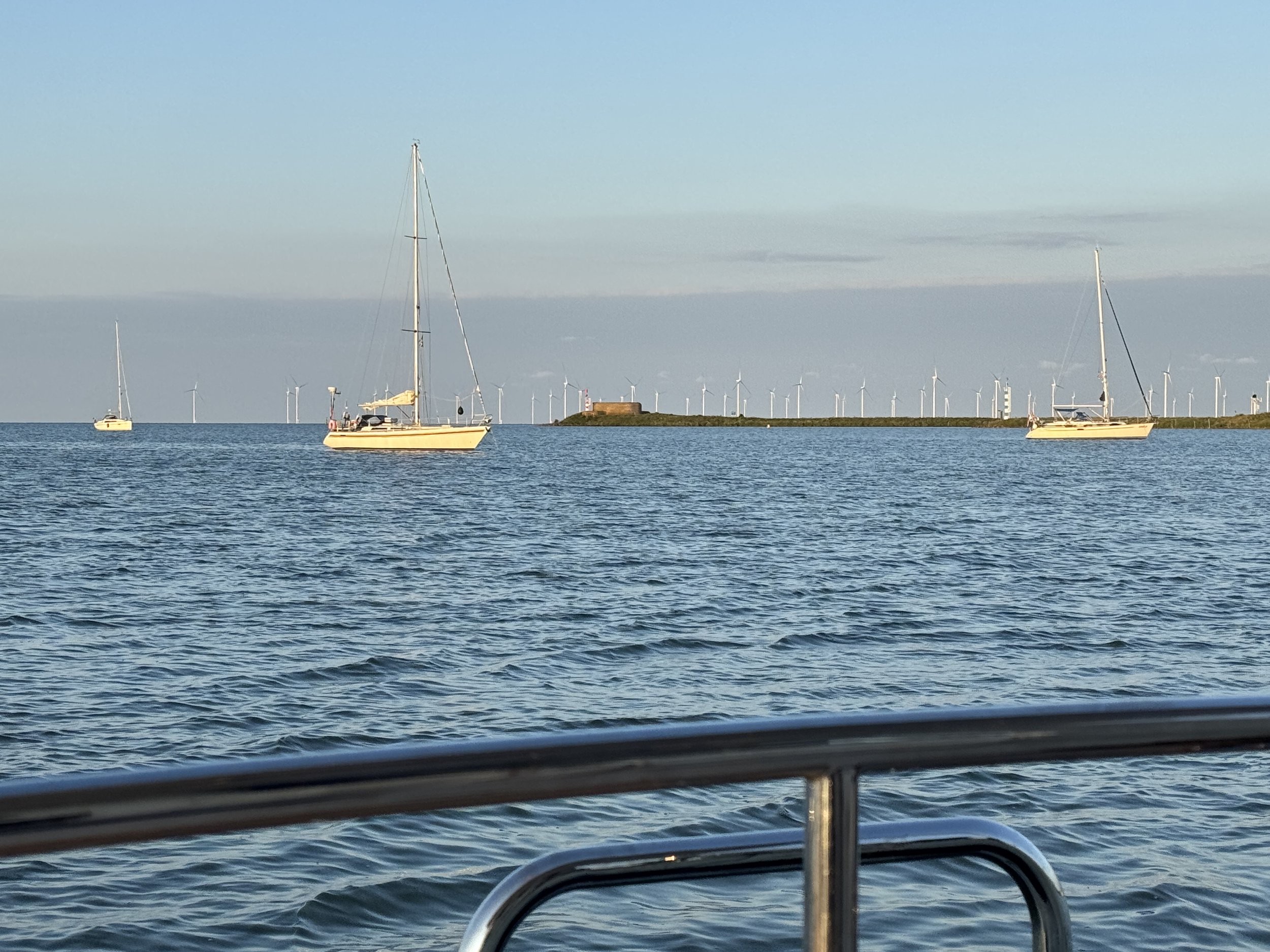

The IJsselmeer was formed by the building of a dam separating it from both the Wadden Sea and the North Sea. The dam that formed the IJsselmeer lies about 25 feet (8 meters) above sea level and is 19 miles (31 km) long. This inland sea lies between northwestern continental Europe - extending along the coasts of Denmark, Germany and the Netherlands, and the range of low-lying Frisian Islands. It is the largest tidal flats system in the world. Due to its globally unique geological and ecological properties, the Wadden Sea is listed as a UNESCO World Heritage site. Its tidal flats and wetlands have tremendous biological diversity and are an important area for both breeding and migrating birds.
Boating in the Wadden Sea is truly magnificent. It is a stunningly beautiful cruising area - though it can be tricky. It is quite shallow and littered with shoals making it critical to pay close attention to the current and tides. Many of the anchorages and harbors dry out completely at low tide - not a problem for some vessels but definitely not conducive to Meraki’s full keel.
Despite several attempts in numerous ports, chandleries and countries, we’d been unable to find a pilot guide that was written in English. This meant we spent an exorbitant amount of time online researching various places we could comfortably visit.






Information from other boaters can be invaluable and we’d been told not to miss Vlieland, the smallest inhabited Frisian island in the Netherlands. I read that motorized vehicles are prohibited on the island - except for extreme circumstances. It sounded interesting and the harbor would be doable for us if we timed our entrance and exit accordingly. We are so grateful for this suggestion.
Vlieland is called 'the island of birds and tranquility'. It is one of the most popular Frisian islands and extremely busy in the summer, but we managed to arrive early enough on a weekday to secure a space in the fairway rafted up against another vessel. We spent three truly spectacular days there.











We walked the wide, surprisingly deserted, sandy beaches, delighting in the chattering call of Storm Petrels wheeling over the surface of the waves. We rented e-bikes and traversed the island, riding through mixed forests thick with the aroma of pine, and then out onto the sand plains where the sweet scent of rugosa roses (known as ‘dune roses’) floated through the salty air. We rode on through the wetlands, the peeping and warbling of so many different birds propagating across the shallow water. And we strolled through the treelined streets of the islands one village where a long history with cranberries has become one of the island’s signature products. You’ll find cranberry-infused everything in the shops; cranberry jam, liqueur, tea, chocolates, mustard and beer!
The noisy peeping of a Eurasian Oystercatcher.








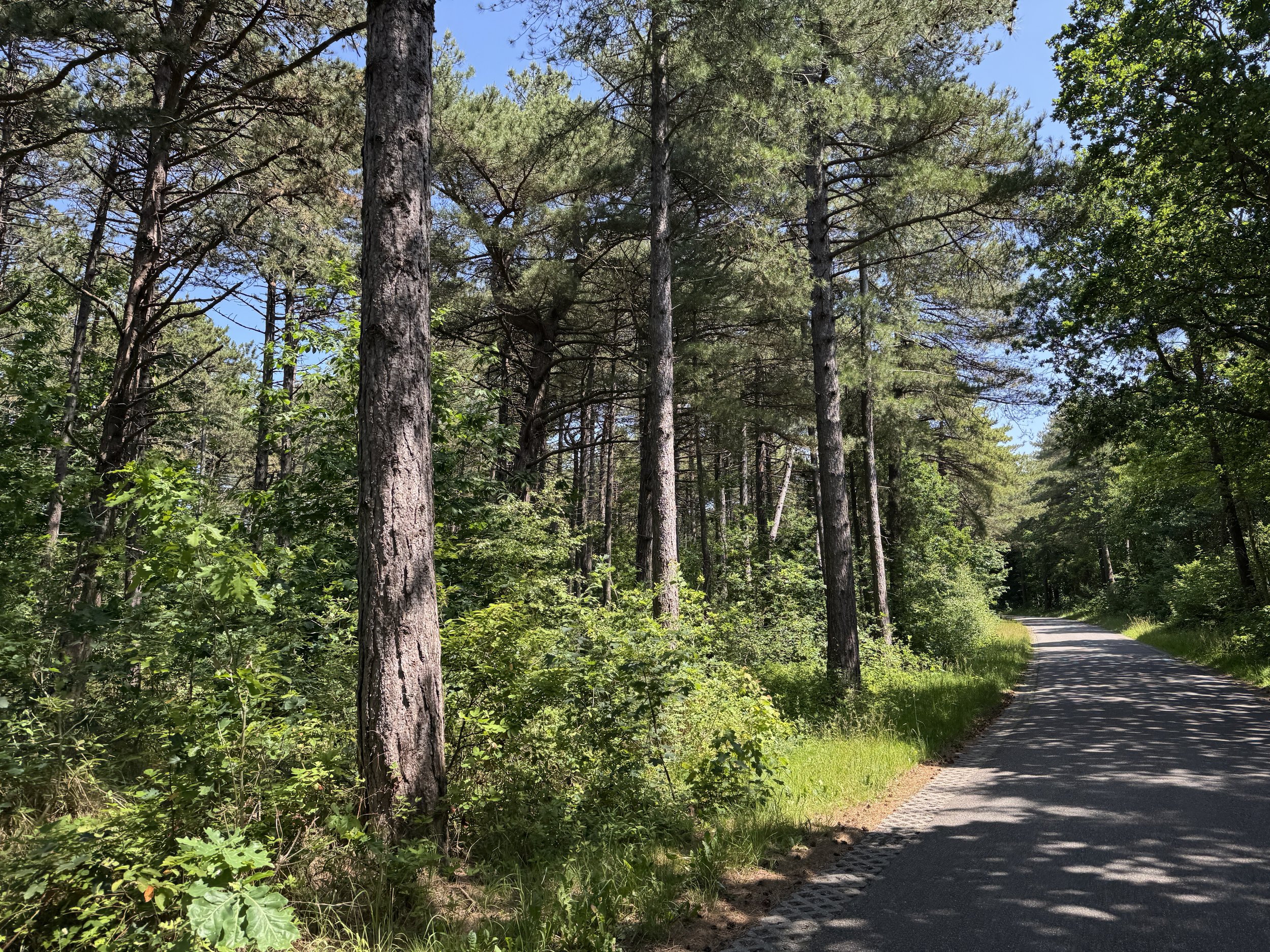





















On one of our beach walks we met a delightful Dutch couple who invited us to their small sailboat that evening for a beer and some nagelkaas and they shared excellent advice on where to stay further along our intended route. I felt fully embraced and deeply at peace on this tiny island and, were it not for a coming storm we’d have stayed considerably longer.
On our final evening in Vleiland we rode to a beach, Tom practiced his kite flying stunts in the gentle onshore breezes and I sat in the powder fine sand listening to the calling of the birds and the rhythm of the waves. My body completely rejuvenated and my spirit refreshed, these memories will last a lifetime.

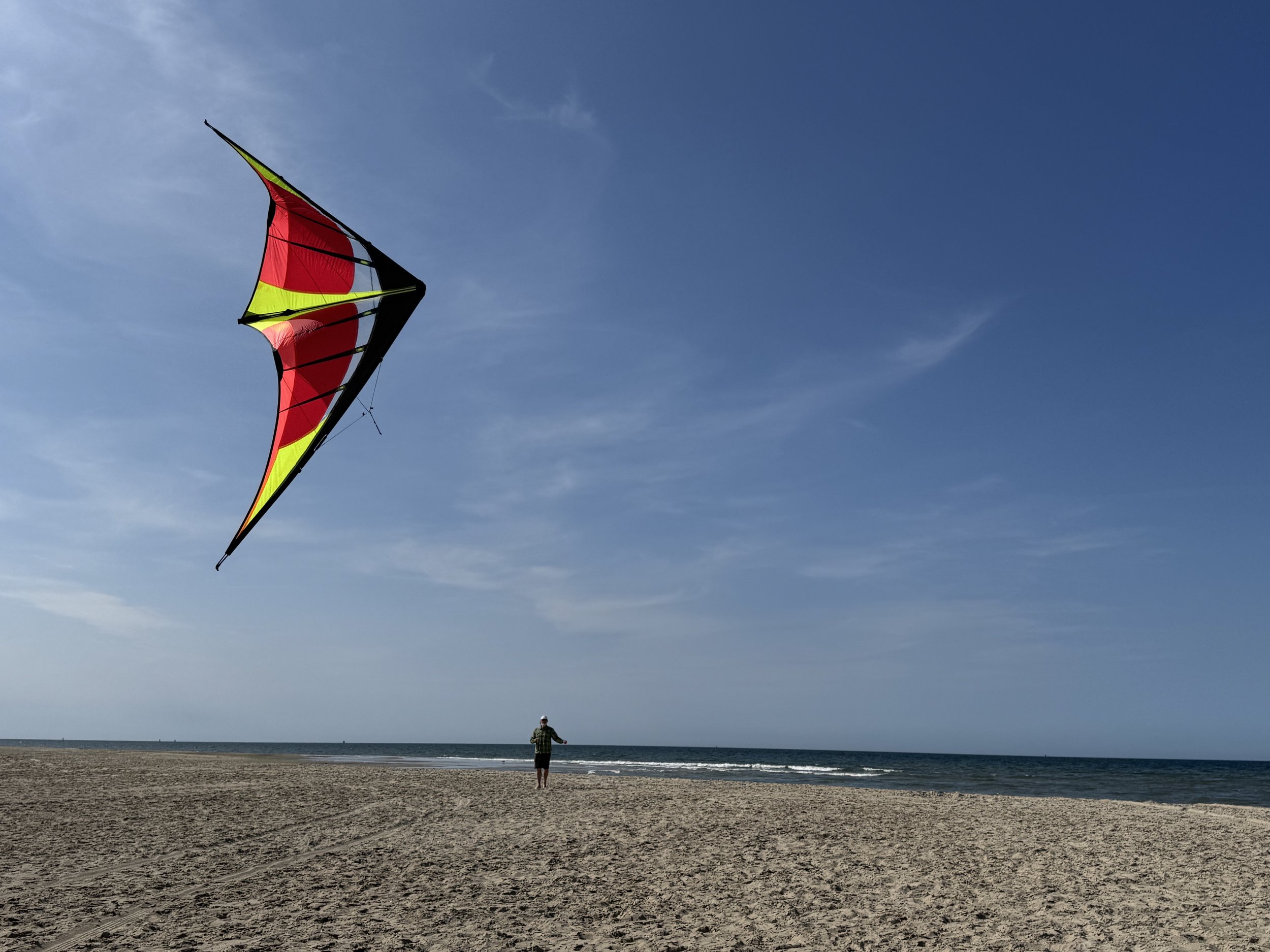





Note: photo captions will not appear if viewing on a cell phone.









